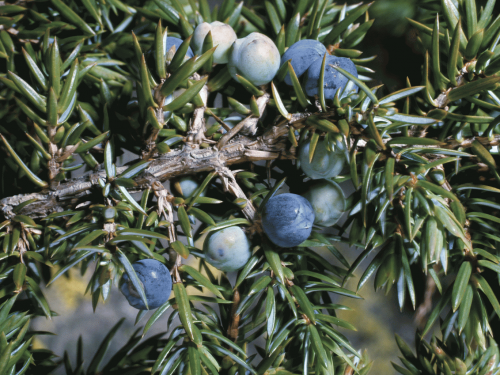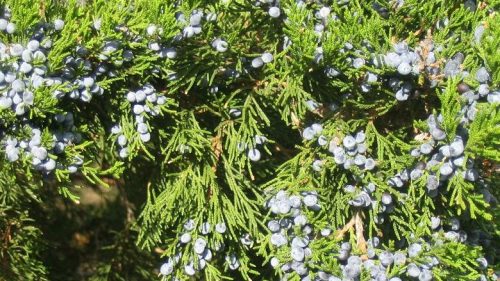ReadyNutrition Readers, we are going to expound on some of the merits of Juniper berries, from the plant Juniperus communis. They aren’t actually a “berry,” but are a part of a cone in the Juniper plant. The berries are used to make gin: that is, alcohol such as grain is infused with juniper berries and leaves and then redistilled to add the flavor of the plant, thus creating the gin.
The Juniper berry is also used in herbal medicine. Juniper is used as a diuretic, and to treat menstrual problems and bladder infections/UTI’s (Urinary Tract Infections).
Juniper in Herbal Medicine
The dosage of Juniper Berries is 2 to 10 grams of the berries, or between 20 to 100 mg of the essential oil. The berries and twigs can also be used for a tea, but be careful to consume no more than 2 cups of it. Also, if you’ve never had it before, you should take in a small amount, in case you’re hypersensitive/allergic to it. Pregnant women and anyone prescribed for Lithium need to avoid consumption of Juniper berries, as well as those with kidney problems. Also, do not allow Juniper berries to be used on open wounds.
They are green when they are immature and dark/purple upon being mature and ripe. It is in this latter state they are safe to use. Juniper berries are used to flavor Norwegian, Swedish, German, Austrian, Polish, and Czech dishes, such as different sauerkraut, roasts, and game meats. Juniperus sabina is a type that grows in central and southern Europe, as well as in Asia. All parts of this subspecies are poisonous.


How To Make a Juniper Infusion
To make a tea (infusion), you can crush 1 teaspoon of berries and add this to 1 cup of boiled water after taking it off boil and sitting for 1 minute. They can also be used in compresses to treat gout, as well as being used to reduce warts. Consult with your physician before undertaking any information in this article. Juniper berries will be ready when they are purple. They are strong to the taste, but there are a lot of things that can be done with them. Happy gathering! JJ out!
